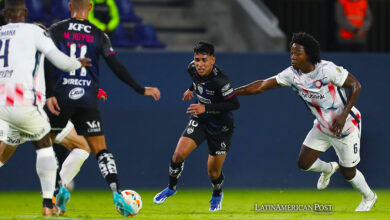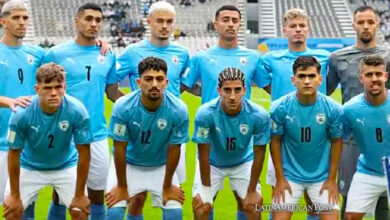The 7 new soccer rules that we are seeing in the Qatar 2022 World Cup
These 7 new soccer rules are being seen for the first time in a World Cup in Qatar 2022. Which one did you already know and which one have you not seen until now?

Photo: FIFA
LatinAmerican Post | Theoscar Mogollón González
Listen to this article
Leer en español: Las 7 nuevas reglas del fútbol que estamos viendo en el mundial de Catar 2022
The first week of the Qatar 2022 World Cup is almost over. In addition to good football, unexpected results, and a lot of controversies, there are 5 new rules that you surely did not know before, and today you are seeing them at the Qatar World Cup.
These are the 5 new rules that you are seeing in Qatar 2022 included by the International Football Association Board, the highest regulatory body for football:
26 Summoned
Surely you were already very curious to see that in the squad list, FIFA increased the number from 23 to 26 players. In this way, each participating country has an even larger bench of substitutes that can maintain the level of the teams higher than that seen in other tournaments.
Although this new rule on paper benefits teams with a large roster, to the detriment of small teams, we have seen that it also favors the tactical approaches of the coaches. With more players, there are more unique skills that they can bring to the table that coaches can bring together.
You can also read: Opinion: Will Qatar 2022 be the worst World Cup?
FIFA says that this decision is made due to the extreme climatic conditions in which the World Cup is played since, even though it is winter and that the stadiums are air-conditioned, high temperatures can affect the performance of athletes.
5 Changes
This rule has been applied since the COVID-19 pandemic. For a couple of years, teams have been allowed to make 5 instead of 3 changes. This has made it possible to maintain the level and intensity of the game for most of the time. Today it is possible to change almost half of the squad on the field, which guarantees better physical condition for a longer time with fresh legs for those admitted.
This change also benefits teams with better players. Several teams have 1 or 2-star players and others that have almost the entire squad playing at the first level. By having greater changes, there will be teams that do not lower their quality with the entry of substitutes, while others do not have many quality names.
Sixth change Due To Injury
In the Iran-England and Saudi Arabia-Argentina matches, we saw this new rule come into effect. This is an additional charge, but only when a player has suffered a blow to the head that impacts the player's health.
Seventh Change In Overtime
Although 5 changes seem like a lot, there is also a rule that allows you to increase to 6 changes (without any injury). This is the sixth substitution when the game goes into Extra Time. This rule will come into effect in the direct elimination stage after the groups.
The idea of this new norm is to be able to offer better play during Extra Time when the tie is maintained. Previously, teams would finish the 90 minutes exhausted, and if the tie was maintained, an additional 30 minutes would be played with players cramping from fatigue. Now, in addition to the 5 changes, an additional one can also be made during this "third and fourth half" to continue giving the players freshness.
Out-Of-Place Semiautomatic
During the match between Argentina and Saudi Arabia, the semi-automatic offside disallowed Lautaro Martínez's goal. Despite the controversy that was created alleging that there was an error in this new technology, FIFA ensures that it is fully calibrated and allows for to reduction of misplaced decision-making.
Although VAR is being used throughout the tournament, this semi-automatic offside beats the Video Assistance Referee at the speed of an offside. This tool projects an automatic image in 3 Dimensions and allows analyzing if the striker is in an illegal position.
One Foot On The Line During Penalties
Another new rule that debuts in the World Cup, but that we have already seen in other tournaments, is that the goalkeeper must keep one foot on the line when kicking a penalty. Otherwise, if the goalkeeper covers the shot, it must be retaken.
This rule gives a little more suspense when kicking penalties since when there is a saved penalty, you must wait for confirmation of the positioning of the goalkeeper's feet.
Longer Addition Time
Another change that you may have already noticed is that, in the World Cup in Qatar, the matches last longer. This is nothing more than a recommendation from Pierluigi Pollina, the president of the FIFA referees committee. The message for the fourth official is to be more strict in the loss of playing time. This is why now it is not normal to see more than 5 minutes of compensation or discount per time.




